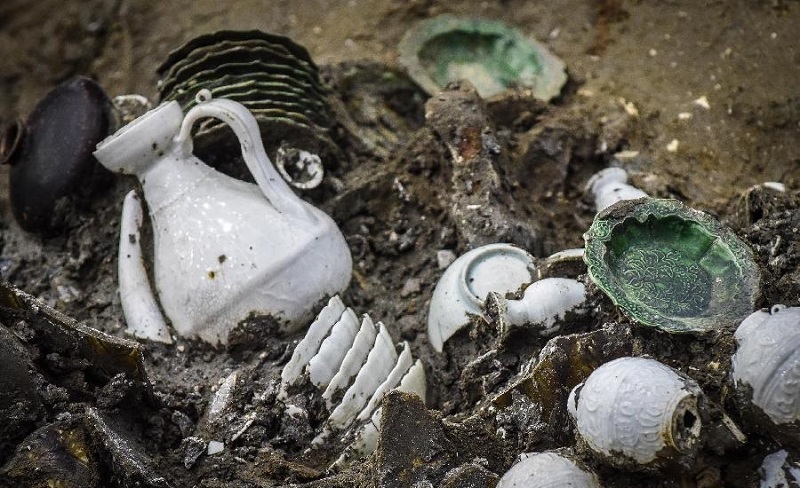In order to deepen academic exchanges on underwater archaeology in the Guangdong Hong Kong Macao Greater Bay Area and expand international cooperation in Southeast Asia, an underwater archaeology international cooperation center has been established in Guangzhou, the capital of Guangdong Province.
According to the Guangzhou Marine Geological Survey, the center is located at a research base in Nansha, Guangzhou, and will cooperate with local marine geological survey departments and other departments to explore deep-sea archaeology.
The local marine geological survey bureau stated that it will cooperate with the national cultural relic survey, assist in conducting underwater archaeological surveys in the province, and soon establish the GBA underwater archaeological cultural heritage geographic information management system.
Specifically, it will strengthen cooperation with the Archaeological Research Center of the National Cutural Heritage Administration and relevant research institutions, universities and cultural organizations of GBA to promote the innovation of underwater archaeological excavation, the research and development of key archaeological technologies and the improvement of archaeological technical equipment.
We will also strengthen international cooperation and exchanges in the protection and restoration of underwater cultural relics, the transformation of archaeological achievements, and talent cultivation.
The establishment of this center is following a series of policies issued by the Guangdong Provincial Government in the past few years to strengthen cultural heritage protection and archaeological work, including a five-year plan for cultural heritage protection and technological innovation.
Guangdong is a key area for underwater archaeology, and the province has carried out several major underwater archaeological projects.
After the excavation of the Nanhai No.1 and Nanao No.1 sunken ships in the South China Sea, Guangdong took the lead in establishing two provincial-level underwater cultural heritage protection areas nationwide.
In a recent development, after years of archaeological excavation of the ancient wooden ship that sank while transporting Chinese porcelain, the overall protection project of the Song Dynasty sunken ship Nanhai No.1 has been approved.
It was salvaged in 2007 and is currently preserved at the Maritime Silk Road Museum in the coastal city of Yangjiang Hailing Island in western Guangdong.
Porcelain, gold, silver, copper and iron relics, and copper coins are only a part of the 180000 treasures discovered in the South China Sea One. Bamboo and wooden lacquerware, as well as preserved animal and plant relics, have also been discovered.
According to the overall protection project, the South China Sea No.1 archaeological excavation will be completed by the end of this year and will move towards a new stage of comprehensive protection, research, utilization, exhibition, and academic exchange.
The Guangdong Provincial Cultural Relics Bureau stated that the archaeological investigation of the Ming Dynasty (1368-1644) sunken ship Nanao 1 will be completed by the end of this year.
The ship was discovered in 2007 in the South China Sea near Nan'ao Island in eastern Guangdong, when a local fisherman caught porcelain.
In addition, breakthroughs have been made in the construction of the underwater cultural heritage protection center, which is expected to be officially put into operation next year.
